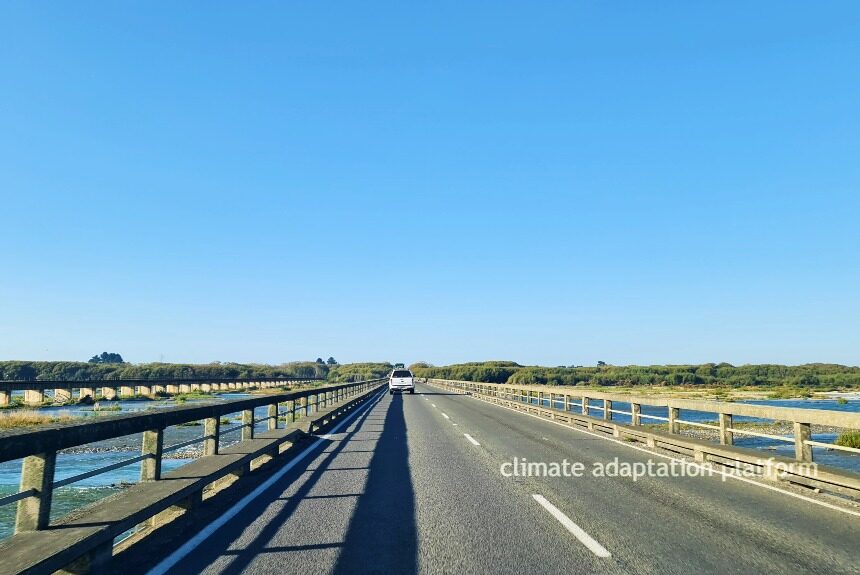Climate Adaptation Platform Team Leader Dr Theuns Henning discuss why integrating climate adaptation into asset management is vital and how New Zealand authorities can improve infrastructure resilience.
Extreme events have recently ravaged New Zealand. The Auckland flooding on January 27 and Cyclone Gabrielle in mid-February 2023 caused widespread damage to infrastructure and properties across the North Island.
The scale of loss and damage these extreme weathers have wrought has highlighted the importance of building resilience in our infrastructure as these extreme weather events are projected to increase.
Climate change is considered a disruptive force within asset management practice. The question faced by asset owners and managers is how they can integrate climate change thinking into their asset management processes now that extreme events and climate shocks are getting more intense and frequent, particularly to long-life assets whose design is not suited to the present and future climate.
Dr Henning shares his thoughts below.

Before cyclone Gabrielle, the flooding in Auckland, two weeks prior, on January 27, was of such great magnitude that no matter how much adaptation or preparation you do, you will still have damages.
There is no way we can make our infrastructure completely resilient to evade such events of that scale and magnitude, and I think this is what I would like to get across.
New Zealand’s National Adaptation Plan is a fantastic step for the government to set the tone and the direction for the rest of the country to follow. What needs to happen now at a local level is for all councils to have climate adaptation strategies and policies in place. This is very important, and some of them have a really good plan in place.
I have completed several projects for the World Bank regarding supporting countries with the integration of climate resilience into asset management. I have worked with some Island nations like the Solomon Islands, Vanuatu, and Saint Vincent.
Also, with the Philippines and South Africa – both of these countries are at the Treasury (Department) level, where we are starting to look at bringing in climate adaptation decision-making as part of the asset management process.
This is very effective because it just gives you a systematic framework to collect data on climate change and risk assessment on your networks. Secondly, it helps you in the decision-making for an investment of where the highest priority areas are, where you can invest in resilience, and then it also integrates resilience improvements, maybe at a small scale, with your other renewals and replacement programs.
So, there’s an efficiency gain when you are doing renewals and replacements projects, you are also addressing resilience at the same time. I think this is what New Zealand councils can do much better.
There are currently no councils that have implemented climate adaptation into their asset management processes. This is something that happens across the world.
An excellent case study that people can look at is Resilient South in Adelaide, where a cluster of local authorities have come together, and between them, they are busy with the implementation process of bringing climate adaptation into asset management.
They get their risk assessment done across all councils, so the moment you do that, you’ve got a consistent approach across all processes. The project also assists them in bringing that information to asset management systems and then helps them bring forward their decision processes.
So, that’s one component of work that needs to happen in New Zealand.
The next component of work that we need to do is to review all our design guidelines and standards to bring in climate adaptation because some of our procedures, standards, and design guides are very traditional – talking about their engineering aspect in isolation but does not give the designer the tools they need to design specific infrastructure whether it is a road, pipe, or treatment plant to make them more climate resilient. We don’t have that at this moment.
So really, the National Adaptation Plan is a very good starting point, but it now needs to filter down into the tools, systems and processes required at a local level.
The Thames Coromandel Coastal Adaptation Pathways is an example of how local councils can better communicate the risk to communities by engaging and collaborating with the community in identifying hazards and developing a framework to manage and reduce the risks associated with coastal hazards on people, property, and the environment.
New Zealand councils also need to start communicating risk to the community better and more effectively. This is going to help people in making a decision when they buy a property regarding the specific exposure of that property as it would give them a sense of preparedness and if they may be okay with the risk of living in a certain area because you can never be risk-free in New Zealand; that is simply not possible. There is always some risk or hazard that you’re going to be aware of. But having that knowledge will help you prepare for an event that may happen and contingency planning around that.
This is the first of a series on Dr Henning’s discussions on integrating climate adaptation into asset management.
About Dr Theuns Henning.
Dr Theuns Henning is the Director of the Master’s programme in Infrastructure Asset Management and an Associate Professor at the University of Auckland. He has conducted several research projects in the area of climate change adaptation. He is the main author of the World Bank’s Guideline for integrating asset management and climate adaptation. He also developed an asset management course under the IPWEA, CC101 Introduction to Climate Adaptation in Asset Management.



Leave a Reply